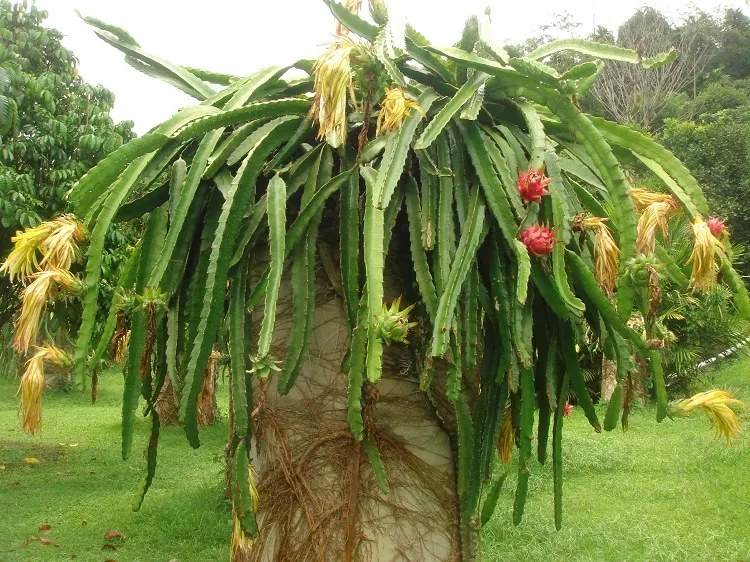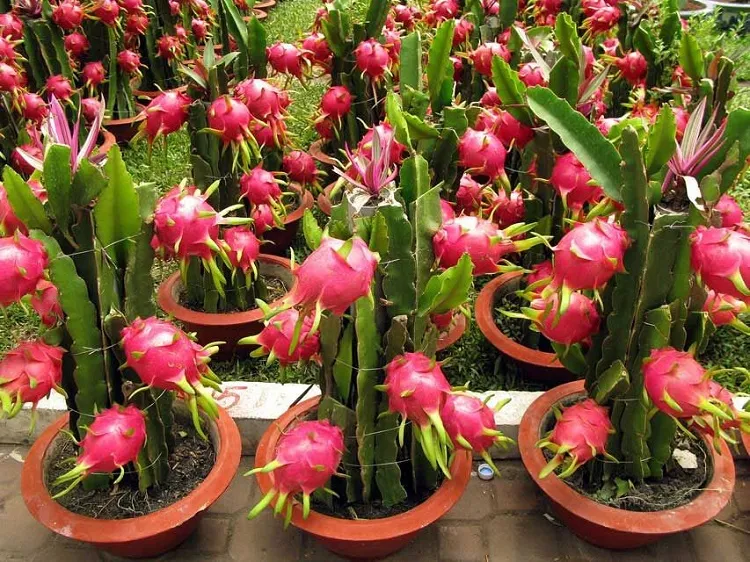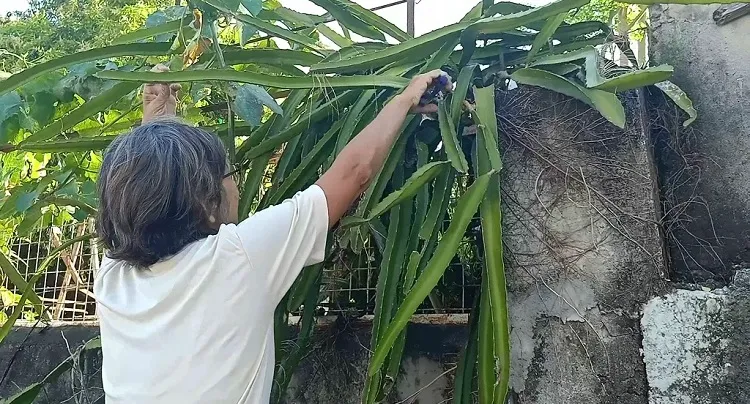Dragon fruit, also known as pitaya, is a cactus, which fruits are eaten, because of its high quality. This dry-loving plant, that originates from Central America, is now grown and used in the tropical regions around the world. Taking care of a dragon fruit tree can be a rewarding experience, as it produces beautiful and exotic fruits with a variety of health benefits. By following these dragon fruit tree care tips in the paragraphs below, you’ll be sure that your plant will thrive and produce a bountiful harvest.
What is a Dragon Fruit Tree?
The dragon fruit tree is a climbing cactus that can reach a height up to 20 feet (6 m). Its branches are sprawling and at the end of some of them ripe beautiful and exotic fruits. They are oval or long in shape and have a bright pink or red outer skin with green scales, resembling a dragon’s skin.
What are the Most Useful Dragon Fruit Tree Care Tips?
For those who live in a warm and humid climate, it’ll be a great possibility to grow a dragon fruit tree in the backyard. This plant can be grown easily from stem cuttings, planted in the soil. Here are some tips on how to care for dragon fruit:
- Soil and planting. Dragon fruit tree prefers well-drained soil with a pH level between 6 and 7. You can plant it in a pot or directly in soil. If you decide to place it in a container, make sure the vessel has drainage holes at the bottom to prevent water from accumulating.
- Watering. This tree require some watering, especially during the growing months. Water your dragon fruit deeply once a week, and more often in hot, dry weather. However, make sure not to overwater it, as this can cause rotting of the roots.
- Fertilizing. Dragon fruit tree need regular fertilization, if you wish it to develop healthy stems and fruits. Use a balanced fertilizer with equal amounts of nitrogen, phosphorus, and potassium. Apply it every two to three months during the growing season.
- Pruning. Pruning your dragon fruit tree is essential to keep it in good form and productive. Remove any dead or damaged branches, as well as those of them, which are growing too close together. You can also prune their tips to encourage new growth.
- Sunlight. This tree requires plenty of sunlight to produce a great amount of fruits. Choose a place for your plant in the garden with at least six hours of sunlight per day. If growing indoors, provide your tree with enough artificial light.
Read also: How to grow a pineapple at home from a fruit?
Dragon Fruit Tree Care: What are the Benefits from its Fruit?
This fruit is nutritious, low in calories and high in fiber, vitamins, and minerals. Here are the most important dragon fruit benefits for health:
- Immune system. The fruit is rich in antioxidants, which help to boost the immune system and protect against disease.
- Digestion. Dragon fruit is high in fiber that promote healthy digestion and prevent from constipation.
- Heart health. It is low in cholesterol and high in monounsaturated and polyunsaturated fats, which is essential for your heart health.
- Diabetes. The fruit has a low glycemic index, which means it doesn’t cause a rapid rise in blood sugar levels. This makes it a good choice for people with diabetes.
- Skin health. Dragon fruit is rich in vitamin C, which is important to keep your skin healthy, and prevent premature aging.
How Long Does it Take for a Dragon Fruit Plant to Fruit?
It takes about two-three years for a dragon fruit tree to mature and produce fruit. However, for some varieties it may take longer to yield, and this period depends on the growing conditions. To encourage your dragon tree to produce fruit, make sure it is well-cared for and receives plenty of sunlight and nutrients.
Dragon Fruit Tree Care: Pruning for a Healthy Tree
Pruning is an essential part of dragon fruit care, as it helps to keep the tree in good condition, and be more productive. Here are some advices for pruning your dragon fruit tree:
- Timing. Prune your dragon fruit tree during the dormant season, which is usually in winter. Avoid to do this during the growing period, as this can damage the tree and reduce fruit production.
- Tools. Use sharp, clean pruning shears to prevent the spread of disease.
- Dead and diseased wood. Remove any dead or diseased wood from your dragon fruit tree, as this can attract pests and pathogens, and reduce the tree’s overall health.
- Branch spacing. Dragon fruit trees may have multiple branches growing from a single point, which can cause crowding and reduced air circulation. Prune these branches to create more space and improve the air flow.
- Height control. These trees often grow quite tall, which makes fruit harvesting difficult. Therefore, prune the tips of the branches to control the height and encourage lateral growth.






